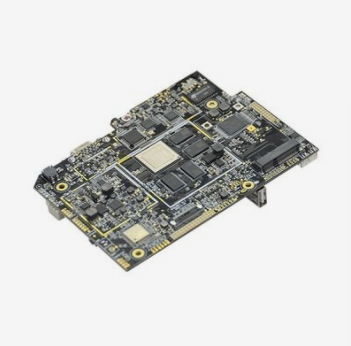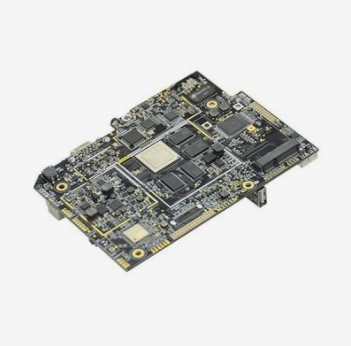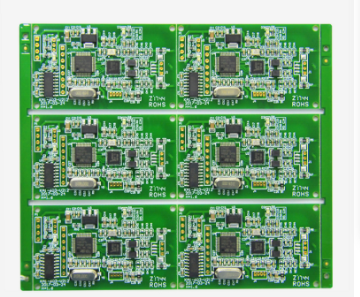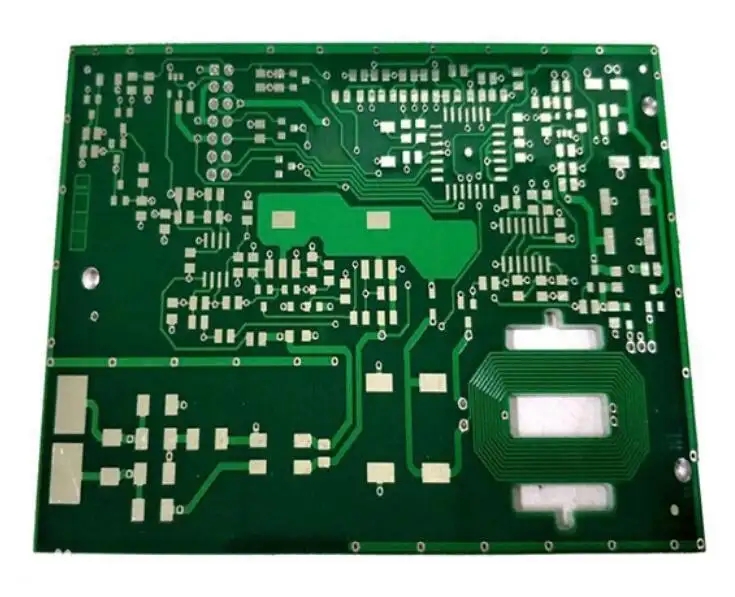
For electronic product designers, especially circuit board designers, design for manufacturing (DFM For short) is a factor that must be considered. If the circuit board design does not meet the requirements of manufacturability Design, the production efficiency of products will be greatly reduced, and even the designed products will not be Manufacture in serious cases. At present, through hole technology (THT) is still in use. DFM can play a great role in improving the efficiency and reliability of through-hole plug manufacturing. DFM method can help through-hole plug manufacturers reduce defects and maintain competitiveness.

This paper introduces some DFM methods related to through-hole insertion. These principles are universal in nature, but may not be applicable in any case. However, they are still helpful to PCB designers and engineers who deal with through-hole insertion technology.
1. Typesetting and layout
Proper typesetting in the design stage can avoid many troubles in the manufacturing process.
(1) Large boards can save materials, but due to warpage and weight, it is difficult to transport in production. It needs to be fixed with special fixtures, so it should be avoided to use more than 23cm × 30 cm of board surface. It is better to control the size of all boards within two or three types, which will help shorten the downtime caused by adjusting the guide rail and repositioning the barcode reader during product replacement, and reduce the number of wave soldering temperature curves with fewer types of board sizes.
(2) It is a good design method to include different kinds of boards in a board, but only those boards that have the same production process requirements in a product can be designed in this way.
(3) Some frames shall be provided around the board, especially when there are elements at the edge of the board. Most automatic assembly equipment requires at least a 5mm area to be reserved at the edge of the board.
(4) The wiring shall be carried out on the top surface (component surface) of the board as far as possible, and the bottom surface (welding surface) of the circuit board is easy to be damaged. Do not wire near the edge of the board, because the line on the edge will be damaged by the claw of wave soldering equipment or the frame transmitter because it is held by the board edge during the production process.
(5) For devices with a large number of pins (such as terminal blocks or flat cables), oval pads should be used instead of round pads to prevent tin bridges during wave soldering.
(6) Make the spacing between locating holes and the distance between locating holes and components as large as possible, and standardize and optimize the size according to the insertion equipment; Do not plate the positioning hole, because the diameter of the plated hole is difficult to control.
(7) Try to use the positioning hole as the mounting hole of PCB in the final product, so as to reduce the drilling process during fabrication.
(8) The test circuit pattern can be arranged on the waste edge of the board for process control, and can be used to monitor the surface insulation resistance, cleanliness and solderability during the manufacturing process.
(9) For larger boards, a path shall be left in the center to support the circuit board at the center during wave soldering, so as to prevent the board from sagging and soldering tin sputtering, which is conducive to consistent welding of the board surface.
(10) The testability of the needle bed should be considered in the layout design. A plane pad (without lead) can be used to better connect with the pin during online testing, so that all circuit nodes can be tested.
2. Positioning and placement of components
(1) Arrange the components in the form of rows and columns according to the position of a grid pattern, and all axial components should be parallel to each other, so that the axial inserting machine does not need to rotate the PCB when inserting, because unnecessary rotation and movement will greatly reduce the speed of the inserting machine. As shown in Figure 2, the components placed at a 45 degree angle cannot be actually inserted by the machine.
(2) Similar elements shall be discharged in the same way on the board surface. For example, make the negative pole of all radial capacitors face the right side of the board, and make the notch marks of all DIPs face the same direction, which can speed up the insertion and make it easier to find errors.
(3) The arrangement direction of dual in-line package devices, connectors and other multi pin components is perpendicular to the direction of wave soldering, which can reduce the tin bridge between component pins.
(4) Make full use of silk screen to make marks on the board surface, such as drawing a frame to stick the barcode, printing an arrow to indicate the direction of wave soldering of the board, drawing the outline of the bottom element with dotted lines (so that the board only needs to be silk screen once), etc.
(5) The component reference symbol (CRD) and polarity indication are drawn and still visible after the component is inserted, which is very helpful in checking and troubleshooting, and is also a good maintenance work.
(6) The distance between the element and the board edge shall be at least 1.5mm (preferably 3mm), which will make it easier for the circuit board to carry out transmission and wave soldering, and less damage to the peripheral elements.
(7) When the distance between the element and the board surface needs to exceed 2mm (such as LED, high-power resistor, etc.), gaskets shall be added below it. If there is no gasket, these elements will be "flattened" during transmission, and are vulnerable to vibration and impact in use.
(8) Avoid placing components on both sides of the PCB, as this will greatly increase the labor and time for assembly. If the element must be placed on the bottom, it should be physically as close as possible to complete the shielding and stripping operation of the welding tape at one time.
(9) The components shall be evenly distributed on the PCB as far as possible to reduce warpage and help to ensure uniform heat distribution during wave soldering.
3. Machine insertion
(1) The pads of all components on the board shall be standard, and the interval distance of the industry standard shall be used.
(2) The selected components shall be suitable for machine insertion. Remember the conditions and specifications of the equipment in your factory, and consider the packaging form of the components in advance, so as to better cooperate with the machine. Packaging may be a big problem for special-shaped components.
(3) If possible, the radial element should be the axial type as far as possible, because the insertion cost of the axial element is relatively low. If the space is very valuable, the radial element can also be selected preferentially.
(4) If there are only a few axial components on the board, they should be all converted to radial type, and vice versa, so as to completely eliminate a kind of insertion process.
(5) When arranging the board surface, the pin bending direction and the range reached by the automatic inserting machine components should be considered from the perspective of the minimum electrical spacing, and at the same time, it should be ensured that the pin bending direction will not lead to tin bridges.
4. Wires and connectors
(1) Do not connect wires or cable wires directly to the PCB, but use connectors. If the wire must be directly welded to the board, the terminal of the board shall be terminated with a wire at the end of the wire. The wires connected from the circuit board should be concentrated in a certain area of the board, so that they can be sheathed together to avoid affecting other components.
(2) Use wires of different colors to prevent errors during assembly. Each company can adopt its own color scheme, for example, the high position of all product data lines is represented by blue, and the low position is represented by yellow.
(3) The connector shall have a larger bonding pad to provide better mechanical connection, and the lead of the connector with a high number of pins shall be chamfered to facilitate easier insertion.
(4) Avoid using dual in-line package sockets. In addition to extending the assembly time, this additional mechanical connection will also reduce the reliability of long-term use. Only use sockets when DIP field replacement is required for maintenance reasons. Nowadays, the quality of DIP has made great progress, and it does not need to be replaced frequently.
(5) The plate surface shall be engraved with a mark identifying the direction to prevent errors when installing the connector. The welding point of the connector is the place where the mechanical stress is relatively concentrated, so it is recommended to use some clamping tools, such as keys and clips.
5. Complete machine system
(1) The components should be selected before designing the printed circuit board, which can achieve the best layout and help to implement the DFM principles described in this paper.
(2) Avoid using parts that require machine pressure, such as wire pins and rivets. In addition to slow installation, these parts may also damage the circuit board, and their maintainability is poor.
(3) The following methods are adopted to minimize the types of components used on the board: row resistors are used instead of single resistors; Replace two three pin connectors with one six pin connector; If the values of two components are very similar, but the tolerances are different, the lower tolerance is used for both positions; Use the same screws to secure the various radiators on the plate.
(4) It is better to design a universal board that can be configured on site. For example, install a switch to change the board used in China to an export model, or use jumpers to change one model to another.
6. General requirements
(1) When conformal coating is applied to the circuit board, the parts that do not need coating shall be marked on the drawing during engineering design. The influence of coating on line to line capacitance shall be considered during design.
(2) For through-hole, in order to ensure the best welding effect, the gap between the pin and the hole diameter should be between 0.25mm and 0.70mm. Larger aperture is beneficial to machine insertion, while smaller aperture is required to obtain good capillary effect, so a balance between the two needs to be achieved.
(3) Elements that have been pretreated according to industrial standards shall be selected. Component preparation is one of the lowest efficiency parts in the production process. In addition to adding additional processes (which correspondingly brings the risk of electrostatic damage and prolongs the delivery period), it also increases the opportunity for errors.
(4) Specifications shall be made for most of the manually inserted components purchased, so that the extension length of the lead on the welding surface of the circuit board does not exceed 1.5mm. This can reduce the workload of component preparation and pin trimming, and the board can better pass the wave soldering equipment.
(5) Avoid using clips to install smaller mounts and radiators because they are slow and require tools. Sleeves, plastic quick rivets, double-sided tape or solder joints shall be used for mechanical connection as far as possible.
7. Conclusion
DFM is a very useful tool for PCB manufacturers who use through-hole plug technology to assemble circuit boards, which can save a lot of costs and reduce a lot of trouble. Using DFM method can reduce engineering changes and make concessions on design in the future, which are very direct benefits.
This paper introduces some DFM methods related to PCB through-hole insertion in PCB production







